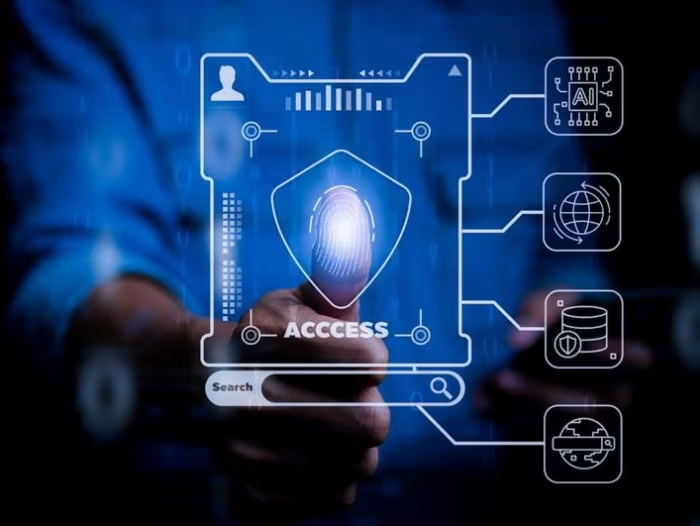Resource / Online Journal
Understanding the Identity management (IDM) System
Discover how Identity Management (IDM) systems secure digital identities, streamline access, and support compliance. Learn key components, benefits, challenges, and best practices.
Published on Sep 10, 2025

Identity Management (IDM) System
Digital identities are now central to how organizations operate. From employees accessing internal systems to customers interacting with services, identity is the gateway. Managing identities has become a big task because of the increasing cyber threats and access points.
There has been a rise in remote work in recent days. Cloud platforms, and third-party integrations have made unauthorized access a top risk. An Identity Management (IDM) system is designed to address this challenge in a systematic way. It will govern user credentials and access from who, how, and under what conditions.
What Is an IDM System?
Imagine a company with hundreds of employees, contractors, and systems, each needing access to different tools and data. Without a central system, managing who can access what becomes chaotic and risky. That’s where an Identity Management (IDM) system steps in.
An IDM system is a framework that oversees digital identities, ensuring the right individuals access the right resources at the right time. It handles authentication (verifying who you are), authorization (deciding what you can do), and access control across platforms. Enterprises use IDM systems to streamline onboarding, enforce security policies, and comply with regulations. Online platforms rely on them to protect user accounts and data from unauthorized access.
Key Components of an IDM System
An IDM system is built around several key components:
Authentication: Verifying identity using passwords, multi-factor authentication (MFA), or biometrics. This is the first gatekeeper. (Learn about authentication types)
User Management: Creating, updating, and deactivating user accounts as roles change or people leave.
Federation and SSO: Allowing users to access multiple systems with one login, improving convenience and reducing password fatigue.
Token Management: Issuing secure tokens for API and app access, especially in cloud-native environments.
Together, these components ensure secure, efficient, and scalable identity handling across digital ecosystems.
How IDM Systems Work
Picture a digital workplace where every user, device, and application needs secure access. An Identity Management (IDM) system acts like a traffic controller, making sure each identity is verified, authorized, and monitored throughout its journey.
It starts with identity lifecycle management: when someone joins, their digital profile is created and linked to specific roles. As responsibilities shift, their access is updated, and when they leave, it’s promptly removed. The system uses unique identifiers, like usernames or biometric data, to distinguish each user.
Access is governed by role-based rules, ensuring people only reach what’s relevant to their job. Behind the scenes, IDM systems connect with other IT platforms and use automation to handle tasks like provisioning and policy enforcement, reducing manual errors and speeding up operations.
Benefits and Challenges of Identity Management Systems
Identity Management (IDM) systems offer organizations a structured way to manage digital identities and access rights. One of the biggest advantages is enhanced security; by enforcing strong authentication and role-based access, IDM systems reduce the risk of unauthorized access and data breaches. They also improve the user experience through features like single sign-on (SSO), allowing seamless access across multiple platforms. For IT teams, IDM systems reduce administrative overhead by automating tasks like provisioning and de-provisioning. Additionally, they support compliance with regulations such as GDPR and HIPAA by maintaining audit trails and enforcing access policies.
However, implementing IDM systems comes with challenges. Integration complexity is common, especially when connecting legacy systems or cloud platforms. Managing multiple identity sources, such as internal directories, external partners, and federated identities, can also be difficult without a unified strategy.
To address these issues, organizations should adopt strong authentication methods and follow industry standards like SAML or OIDC. Also, implementing continuous monitoring to detect anomalies and ensure policy enforcement can help. These best practices help maximize the value of IDM systems while minimizing operational risks.
For organizations looking to reduce friction, save time, and improve long-term ROI, partnering with experienced Identity and Access Management providers like TechDemocracy can be a game-changer. With 24+ years of IAM expertise, 15M+ identities managed, 1600+ successful implementations and 20+ accelerators to cut time-to-market and reduce costs. TechDemocracy delivers tailored cybersecurity solutions that secure access while optimizing performance.
Conclusion
Identity Management (IDM) systems play a vital role in securing digital identities and controlling access across modern IT environments. By automating identity lifecycle tasks and enforcing role-based access, they help organizations reduce risk, improve user experience, and stay compliant with evolving regulations.
To stay ahead of threats and streamline operations, organizations must prioritize effective IDM implementation, integrating strong authentication, continuous monitoring, and standards-based frameworks. For cost-effective cybersecurity solutions tailored to your needs, contact TechDemocracy and take the next step toward securing your digital ecosystem.
Recommended articles


A Comprehensive Introduction to Identity and Access Management (IAM)
Take Your Identity Strategy
to the Next Level
Strengthen your organization's digital identity for a secure and worry-free tomorrow. Kickstart the journey with a complimentary consultation to explore personalized solutions.